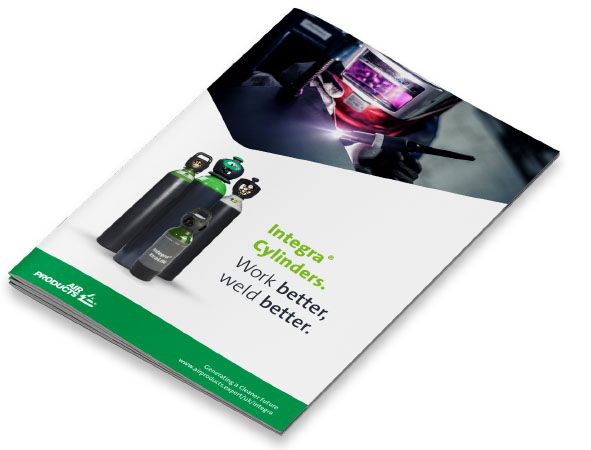Test results Integra® e2 Cylinder at Overlasko Konstruktie
An extensive test series at Overlasko Konstruktie has shown that switching to the Integra® e2 Cylinder from Air Products delivers gas savings of 18-20%.
Overlasko Konstruktie
Overlasko Konstruktie BV is located in Vlissingen-Oost in Zeeland and specialises in metal processing. It works a lot with thick-walled materials, mostly for offshore applications. They currently use the first generation Integra® Cylinder from Air Products. Overlasko is constantly looking at ways to optimise costs, hard condition is that no concessions are made in terms of quality. In consultation with our welding experts, it was decided to set up an extensive test series to investigate whether the deployment of the new Integra® e2 Cylinder could lead to significant gas savings at Overlasko.
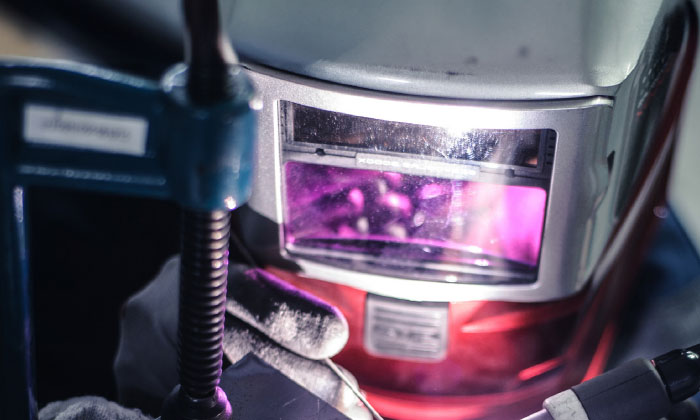
Advantages of Integra® e2 Cylinder:
- Starting peak elimination
- Flow stability
- Leak detection
- Flow control
Starting peak elimination
The starting peak is a well-known phenomenon when using traditional welding gas cylinders. Excessive pressure build-up in the gas hose not only leads to gas wastage, but can also be a cause of porosity in the weld.
The extra gas from the starting peak also causes turbulence. This draws ambient air into the welding arc, which can cause porosity. The Integra® e2 Cylinder is automatically eliminates this starting peak.
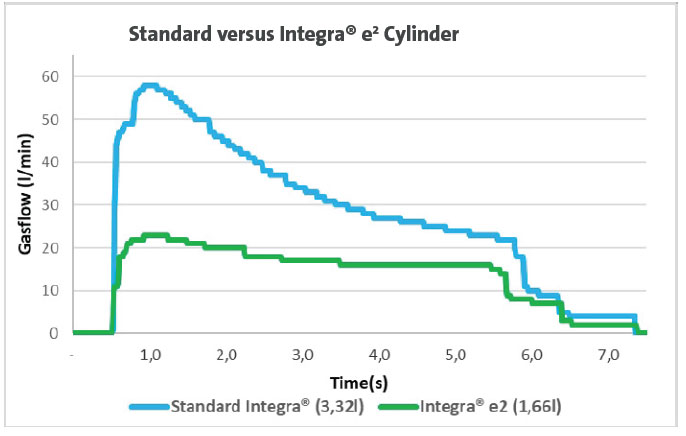
Representation of gas wastage occurring at a weld of about 6 seconds due to the starting peak. Data a@come from a test at Overlasko on 19-05-23.
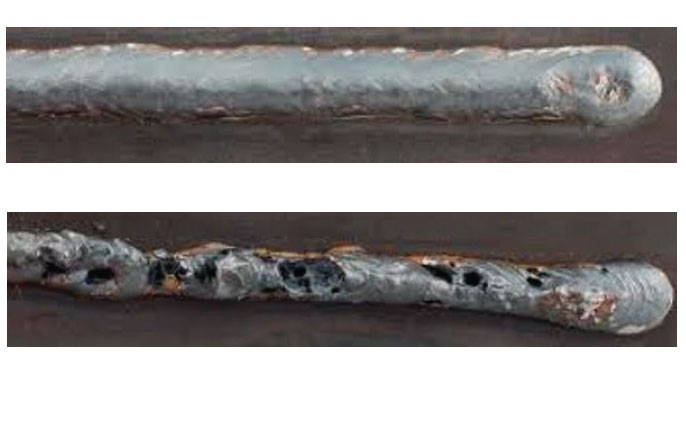
Example of porosity due to the starting peak when MAG welding carbon steel with Ar/CO₂/O₂.
Flow stability
As a traditional gas cylinder becomes empty, gas flow increases. This directly affects the quality and productivity in your welding and also causes unnecessary gas consumption.
The advanced reducing valve of the Integra® e2 Cylinder automatically controls flow stability and ensures that this increase in gas flow does not occur.
Leak detection
The leak detection function naturally leads to saving gas, and therefore money. In addition, it also prevents contamination with ambient air. This can result in poorer welding quality due to excessive oxidation, resulting in welding defects and repair work.
Moreover, by performing regular leak tests, the choking hazard can be reduced in a confined work environment.
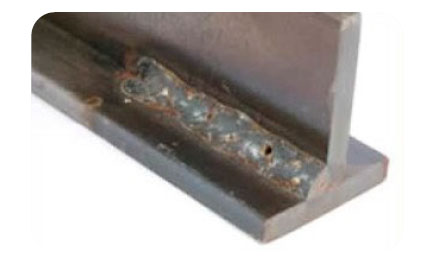
Porosities in the weld due to action on the weld pool of ambient air present in the shielding gas.
Flow control
Each welding application has its own optimum flow. The Integra® e2 Cylinder has its own series of 9 IFOs, with which the flow is fixed. This ensures quality and productivity and also prevents unnecessary manual flow increases.
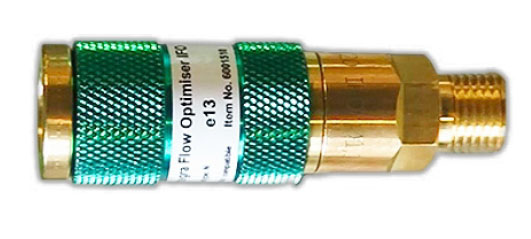
In this test series, it became clear once again that a flow of 15 l/m is sufficient for the measured welding at Overlasko. When choosing the right IFO, it is important to always measure the flow at the torch and not at the welding machine.
Research design
The test series covered several test days over a six-week period. This involved two welders, performing the same welding work on identical Fronius welding machines, equipped with:
1. Integra® e2 Cylinder & “e15” IFO 1.
2. First generation Integra® & IFO 12 l/min
After connecting the IFOs, the systems were measured and set to 16 l/min at the torch.
WPM units are connected to both welding machines to log the following data:
- Gas flow
- Total welding time
- Number of starts/stops
- Pressure/Temperature
Five copies of each cylinder were consumed throughout the study, with all data logged in the production environment.

Results
Putting all study results side by side, the average welding time per cylinder for the Integra® e2 Cylinder is 20.3% higher than for the standard Integra® Cylinder.
This means that with the Integra® e2 Cylinder - and therefore with exactly the same amount of welding gas - there was almost an hour and a half of additional effective welding time (5,253 seconds).
Measured data
| Standard Integra® (L1) |
Standard Integra® (L1) |
Standard Integra® (L1) |
Standard Integra® (L2) |
Standard Integra® (L2) |
Average | |
| Total welding time in second | 27501 | 29725 | 29409 | 25133 | 17617 | 25877 |
| Average flow in l/m | 20,0 | 19,8 | 20,2 | 20,8 | 23,2 | 20,6 |
| Pressure in bar | 30,8 | 22,5 | 17,5 | 38,5 | 8,6 |
| Integra® e2 (L2) |
Integra® e2 (L2) |
Integra® e2 (L2) |
Integra® e2 (L2) |
Integra® e2 (L2) |
Average | |
| Total welding time in second | 34792 | 32637 | 27892 | 28893 | 31435 | 31130 |
| Average flow in l/m | 18,2 | 17,5 | 20,4 | 21,6 | 18,7 | 19,2 |
| Pressure in bar | 7,5 | 14,1 | 11,5 | 13,6 | 7,3 |
Notes on measurement results
Two things stand out immediately from the measurement results, the 5th cylinder on the standard Integra® and the 3rd and 4th cylinders on the Integra® e2 show lower welding times than expected beforehand.
In the case of the standard Integra® Cylinder, leakage is the most logical explanation. In this case, the flow at the torch will have been significantly lower than the 23.2 l/m measured at the welding machine. With the leak detection feature, Welder 2 could have determined this on an Integra® e2 Cylinder in advance by performing a leak test.
The deviating values on the Integra® e2 Cylinder are caused by the unnecessary deployment of the socalled “+” position. This allows the normally fixed flow setting to be increased manually in exceptional situations. It was established with Overlasko that both the welding work and the working conditions do not warrant using this position and that a flow of 15 l/m at the torch is sufficient. Removing these three anomalous results from the measured data, the average total load times per cylinder came to 27,942 and 32,955 seconds.
The average welding time per cylinder is then 17.9% higher with the Integra®e2 cylinder than with standard first-generation Integra® Cylinders.
Comments and recommendations
A well-known effect in all common cylinders with a standard reducer, is that the flow drops very gently when the cylinder is almost empty, with the welder not always noticing that the flow is already too low.
The Integra® e2 Cylinder keeps flow stable for longer, only to collapse abruptly at the end of its life. The welder notices this immediately and will change immediately, avoiding the risk of welding errors due to welding with too low flow.
As this study and also the graph shown, the starting peak is a major cause of gas wastage. Because this peak occurs only in the first
seconds of the weld occurs, we can say that the shorter the weld, the higher the relative savings will be with start-up surge protection.
The average duration per weld in this study at Overlasko was 50 seconds. If the average welding
duration in your production process is shorter, you will be able to save significantly more gas in
percentage terms.
This research further endorses that proper preparation and use of the entire welding system is always paramount. A welder who performs regular checks for leaks and flow differences between the torch and the machine will deliver better weld quality and waste less gas, no matter what resources you provide. However, deploying the Integra® e2 Cylinder does make it a lot easier for this welder to perform at maximum efficiency.
Latest news

Test results Integra® e2 Cylinder at Overlasko Konstruktie
An extensive test series at Overlasko Konstruktie has shown that switching to the Integra® e2 Cylinder from Air Products delivers gas savings of 18-20%.
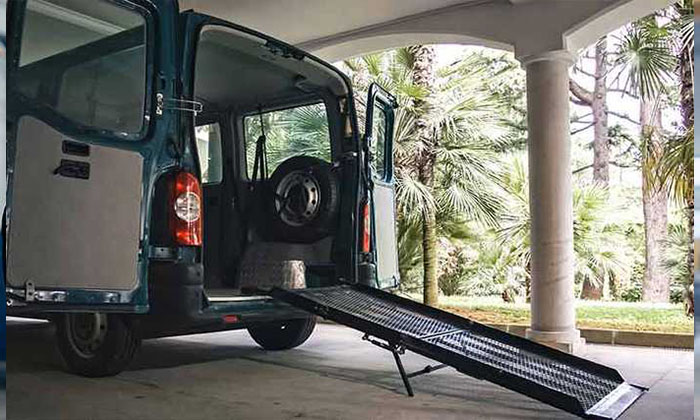
"We highlighted concerns about handling heavy welding gas cylinders – Air Products listened and acted."
Read how switching to Integra® cylinders helped Allied Vehicles reduce safety risks as well as production downtime.
Book your free demonstration.
Find out how the Integra® cylinders can help you work better and weld better.
Please complete the form to request a FREE on-site demonstration by one of our qualified welding specialists or alternatively call us on 0800 389 0202.
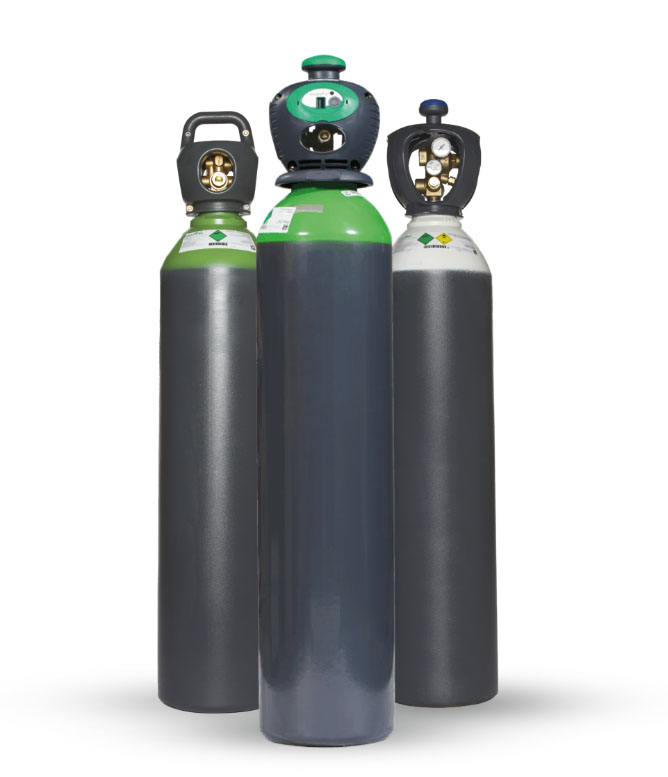
Download our brochure.
Integra® Cylinders Brochure
